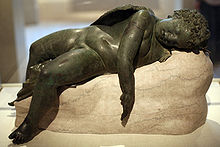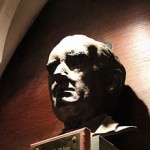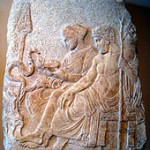 A recently published study in the Journal of Sports Sciences adds new evidence to the idea that physical skills in waking life can be improved by practicing those skills in lucid dreaming. Although the study was small and needs to be replicated, the implications of its findings are potentially enormous for a new mind/body approach to sports training and peak athletic performance.
A recently published study in the Journal of Sports Sciences adds new evidence to the idea that physical skills in waking life can be improved by practicing those skills in lucid dreaming. Although the study was small and needs to be replicated, the implications of its findings are potentially enormous for a new mind/body approach to sports training and peak athletic performance.
The study was conducted by German psychologists Tadas Stumbrys, Daniel Erlacher, and Michael Schredl. This team has an excellent background in sports science, sleep laboratory research, and lucid dreaming experiments. Their strong history of high-quality scholarship lends credibility to their claims.
The premise of their study is that a mental simulation of physical behavior is neurologically the same as a “real” enactment of that behavior, with the difference that the former does not extend to bodily movement, while the latter does. As Stumbrys and his colleagues put it, “covert actions are actual actions, except for the fact that they are not executed.” If this is true, as a great deal of neuroscientific evidence indicates it is, then practicing an action “covertly” should have measurable benefits when the action is later performed “openly.” This is the hypothesis that Stumbrys and his colleagues put to the test.
They recruited 68 participants (32 male, 36 female) who followed an online program that trained them in a sequential finger-tapping task on a computer keyboard. The participants were then separated into four groups with different instructions about how to practice the finger-tapping task: 1) actual physical practice, 2) mental practice while awake, 3) mental practice while lucid dreaming, and 4) no practice (the control group). Compared to the control group, all three other groups, including the lucid dreaming group, displayed significant improvements in a follow-up performance of the task after practicing.
The study was not big enough to say if lucid dreaming practice is better or worse than other forms of practice. But the results clearly showed that practice in lucid dreaming does have real performance benefits that are at least comparable to the benefits gained from other practice modes. Given the power of dreams to simulate reality with amazing intensity and accuracy, the possibilities for further development of this approach seem wide open.
In light of these findings, several questions immediately present themselves. What kinds of physical skills are most benefited by lucid dreaming practice? How deep and long-lasting are the improvements? What are the best methods to teach people to have lucid dreams in the first place?
Future studies will be needed to answer these questions. It is not too early, however, to envision some of the practical applications of lucid dreaming in sports training:
1) Providing a safe arena in which high-performance athletes can practice dangerous moves and risky routines, developing skills at the farthest edges of their abilities;
2) Offering injured athletes an opportunity to continue training and skill-building during their rehabilitation;
3) Enabling underprivileged athletes to engage in effective practice of their sports even if they have limited access to physical facilities;
4) Giving athletes at all levels a powerful psychological means of focusing their minds for optimal game-day performance.
 Google recently released a computer program that may help understand various aspects of visual imagination in dreaming. Check out these images in their “Inceptionism Gallery” here. The main discussion of the program is from a June 17 post on the Google Research Blog, here. Other images can be found at the Twitter hashtag #deepdream.
Google recently released a computer program that may help understand various aspects of visual imagination in dreaming. Check out these images in their “Inceptionism Gallery” here. The main discussion of the program is from a June 17 post on the Google Research Blog, here. Other images can be found at the Twitter hashtag #deepdream.




